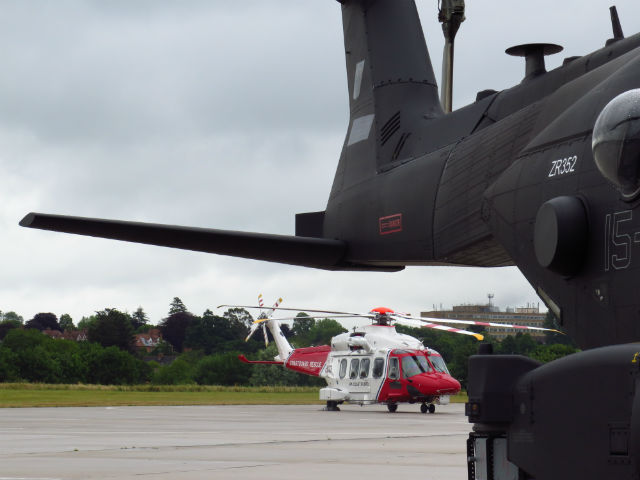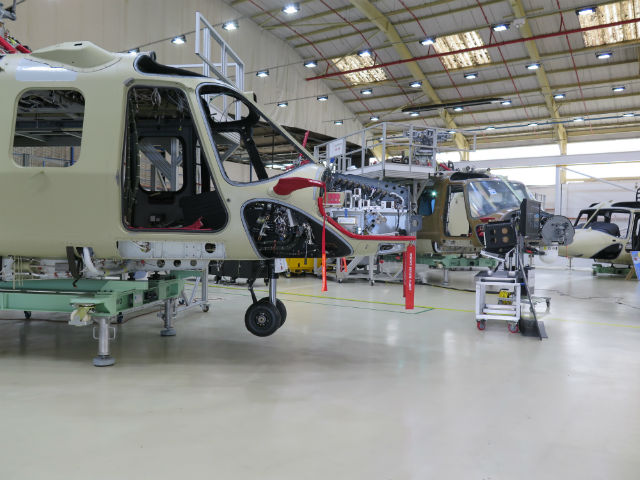Despite its proud aeronautical heritage, the UK has only one aircraft manufacturer that has been in continuous production for 100 years.
The perhaps unlikely holder of that title is Westland. Although for some people it is simply a suffix to Italy’s Agusta, the firm continues to assemble aircraft at its Yeovil facility in the southwest of England.
It began aircraft manufacture in 1915, building the Short Brothers Type 184 seaplanes for the British Admiralty. Other notable fixed-wing types were assembled at Yeovil, including the Vickers Vimy, Supermarine Spitfire and Seafire, and Westland Lysander.
However, in 1946 the company made the decision to switch to making helicopters – the product for which it became synonymous.
Since its first rotary-wing type arrived in the early 1950s – the Westland Dragonfly, a licence-built version of the Sikorsky S-51 – the Yeovil site has delivered around 3,000 helicopters.
But assembly work at the plant is now largely confined to two key models – the AW101 and the AW159 – with a smaller line devoted to the search and rescue (SAR) variant of the new AW189.

Dominic Perry/Flightglobal
Although additional work has been generated through maintenance, overhaul and upgrade contracts with the UK Ministry of Defence, there is the lingering question over the long-term future of Yeovil. Or to put it another way – for how many years of its second century will aircraft manufacturing continue?
For instance, assembly of the AW159 – also known as the Lynx Wildcat – for the British Army and UK Royal Navy, and for South Korea’s navy, is about halfway through the combined 70-unit total. Production is guaranteed until mid-2017. After that it relies on AgustaWestland securing more of those so-far-elusive export deals.
“We have a contract with Korea, as well as other countries that may be coming,” chief executive Daniele Romiti told journalists at a 12 July event to celebrate the company’s centenary.
The short- to-medium-term outlook for the 15t AW101 is a little brighter, however. In late 2013 Norway was added to its customer list, with an initial deal for 16 SAR-roled helicopters and six options.
Oslo’s first AW101 is on the line at Yeovil, with a second to enter final assembly in the coming weeks. Deliveries are scheduled to run from 2017 to 2020, and Romiti says Norway is “very happy with how the programme is moving”, with the nation’s minister of the interior having recently visited the plant.

Dominic Perry/Flightglobal
Deliveries of the SAR-configured AW189s, meanwhile, are scheduled to run until 2017 and total 12 units: 10 for Bristow Helicopters and two for AAR Airlift for use in the Falkland Islands.
Although other long-term opportunities for the Yeovil factory exist – potential assembly work on new-build Boeing AH-64E Apaches later this decade, and an idea mooted by Romiti for a new joint Anglo-Italian military development for the mid-2020s – AgustaWestland is clearly hedging its bets.
“An assembly line is one element of industrial capability, but it’s not the only one,” says Romiti.
“The companies [Agusta and Westland] are now so integrated that many components from Yeovil are coming into Italian models.”
The growth of the facility’s design capabilities can be seen on the new AW169 medium twin, where Yeovil has contributed extensively to the helicopter’s transmission and rotor system. In addition, it is becoming a centre of excellence for tiltrotor development.
Although the AW609 civil tiltrotor is yet to enter service – that milestone is scheduled for 2018 – the airframer is already working on a larger second-generation version under the European Union’s Clean Sky 2 programme with capacity for up to 24 passengers. As part of this effort, Yeovil is providing engineering expertise for the type’s prop-rotor blades and hubs.

Dominic Perry/Flightglobal
Romiti describes Yeovil as having three pillars supporting its future: military, civil, and exports. Success in the latter field, he notes, could be improved if the company were able to take advantage of the same level of support as its rivals across the Atlantic enjoy via the US foreign military sales process.
He has already given that message to the UK government during a recent meeting with trade and industry minister Francis Maude. “I emphasised that we need the support of the British system. FMS is a very powerful tool. To have something similar would not give us any favours, but it is about not being penalised whenever we have to compete with US products,” he says.
The Italian government is already considering something similar for government-to-government sales and overall the UK administration’s “attitude is positive”, says Romiti.
In the long term, then, it appears to rest on the UK government to decide what kind of industrial capability it wants the nation to have.
As Romiti points out, AgustaWestland is one of only six or seven large-scale helicopter manufacturers across the world.
“Being among the seven is something that is difficult to build, but easy to destroy,” he says.
Source: FlightGlobal.com























